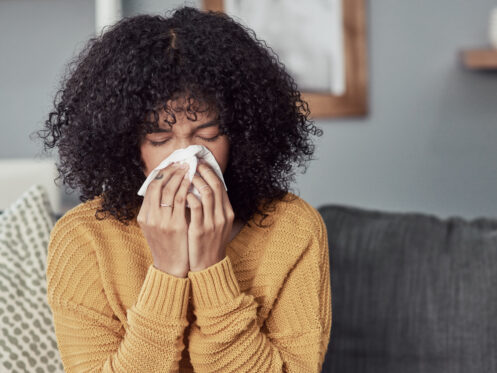Having a healthy, intimate space is one of the best things you can do for yourself and your family. Your home is your territory; a place you spend most of your time in. Unfortunately, for many people, it can be an unsafe place to be. The quality of your indoor air can make or break your well-being, impacting everything from your respiratory and mental health to overall comfort. Here’s how to take control of your home’s air quality and why it is important.
Cut Down on Pollutants
The first and most important step to keeping your indoor air clean is to understand the common sources of pollution in your home and minimize them as much as possible. Some common pollutants in Modesto include:
Radon
Radon is a naturally occurring radioactive gas without smell, taste, or color. It’s produced when uranium, found in all rocks and soils and, sometimes, water, decays. Outdoors, radon quickly dilutes to very low concentrations, posing little to no threat. However, when it seeps through the cracks and gaps in your foundation, it can accumulate to dangerous levels in the house, especially if ventilation is not optimized.
When inhaled over a long period, radon can cause lung cancer. In fact, it’s known to cause between 3% and 16% of all lung cancers in the country. Have a qualified HVAC technician perform a test to detect the levels of radon in your indoor setting.
If it’s dangerously high, you can minimize indoor radon levels by preventing its entry into your home. Seal all cracks in floors, walls, and foundations with specialized radon-resistant materials. Additionally, ensure proper ventilation, especially in basements and crawl spaces, to dilute any radon that might sneak through. Some people also use plastic sheeting in crawlspaces as an added barrier.
Exhaled Smoke
Secondhand smoke is exhaled by a cigarette, cigar, or pipe smoker. It contains chemicals such as formaldehyde, nicotine, and carbon monoxide, which are all known to cause respiratory issues, heart disease, and certain types of cancer.
Thirdhand smoke refers to the toxic smoke residue that sticks on surfaces like clothes, furniture, carpets, and walls. It’s even more dangerous because it lingers for a very long time and can be absorbed through the skin or ingested. Thirdhand smoke may also react with natural gases in the air to form compounds that can lead to DNA damage or cancers.
The only way of dealing with this is to enforce a no-smoking policy inside your house. If you must smoke, do it outside and frequently deep clean the clothes that you wear while smoking.
Cleaning Products
Be very careful of the products you use as detergents, disinfectants, and air fresheners. Some of them contain volatile organic compounds (VOCs), sulfates, and phthalates. VOCs are carbon-based molecules that, when inhaled, can lead to respiratory irritation, headaches, dizziness, and cancer in the long term. Sulfates irritate the skin and eyes, while phthalates interfere with hormone production.
It’s always safer to use natural cleaning alternatives such as vinegar, baking soda, and lemon juice. When shopping, opt for plant-based cleaners and low-VOC detergents.
Biological Contaminants
Biological pollutants are tiny organisms or their byproducts that compromise indoor air quality. For example, pets shed hair and dander, which can trigger allergies and respiratory issues in sensitive people. Mold releases foul smells and spores that also trigger respiratory problems and allergies. Bacteria and viruses, on the other hand, cause or spread illnesses.
If you have pets, groom them regularly and promote ventilation to minimize the buildup of pet dander in your air. You can reduce mold and other pathogens by controlling humidity levels and using air cleaning systems alongside your heating or air conditioner.
Test Your Air Quality
If you are concerned that you have an indoor air quality problem but you can’t exactly pinpoint what might be causing it, consider conducting an air quality test. You can either hire a professional or do it yourself. The former is far more comprehensive because professionals use specialized equipment to assess pollutants, and they can also provide expert recommendations for improving air quality based on their findings.
If you decide to test your air quality yourself, invest in the best home test kits you can find in your area. Consider factors such as the range of pollutants the kit can detect, the accuracy of results, its ease of use, and reliability. Some kits measure specific contaminants like radon, carbon monoxide, VOCs, or mold spores. If you have a smart thermostat that also reads humidity levels and airborne particulate matter, it can offer additional insights into your indoor environment.
Change or Wash Your HVAC Filters
Your HVAC filters are your first line of defense against air pollutants. Their primary role is to trap and hold airborne particulate matter, protecting both your household members and the HVAC system itself from the havoc they can wreak.
The frequency of your filter changes will mainly depend on the amount of contaminants in your home, household health needs, and the type of filter you use. If you have multiple pets, live in a highly polluted environment, or your household members suffer from allergic reactions or respiratory issues, you should change or wash (for reusable types) your filters every 20 to 45 days. In normal circumstances, replacing the filters after 60 to 90 days is generally sufficient.
Invest in an Air Purifier
An air purifier is specifically designed to remove airborne pollutants, allergens, and toxins from your living space. They feature advanced filtration technologies such as HEPA filters, activated carbon, and UV light to capture and neutralize every particle or organism floating in the air.
It’s important to understand that, even though your HVAC filters do a good job of cleaning your air, they aren’t sufficient. HVAC manufacturers have to factor things like airflow and maintaining consistent system pressure into the filter design. This is why you find that the MERV rating of HVAC filters often ranges from 4 to 12. Air purifiers, however, can have a MERV rating as high as 17.
The MERV (minimum efficiency reporting value) rating is the standard metric used to measure the effectiveness of a filter. The higher the value, the more effective the filter is.
Control Humidity
You may also need to invest in a humidifier and dehumidifier to improve your indoor air quality. Excess humidity creates ideal conditions for mold, bacteria, dust mites, and fungi to thrive. Moreover, high moisture levels can cause airborne particles to remain suspended, allowing pollutants to linger longer in your living space. On the other hand, low humidity dries out your hair and skin, making it easier for pathogens to enter your body.
The optimal humidity level for a healthy and safe home is 40%-60%. Use a humidifier to add moisture to dry air and a dehumidifier to reduce excess humidity.
Count on the Pros
Keeping indoor air sterile, healthy, and safe is a team effort. At Loves Air, our experts can test your air and provide reliable, tailored solutions to improve your indoor environment. You can also count on us for heating and air conditioning services for all makes and models of systems, including ductless systems, and repairs since your system greatly influences your home’s air quality.
Reach out to Loves Air today for professional indoor air quality solutions in Modesto.



